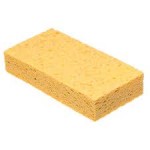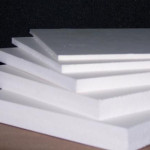Cushions: Block foam versus chip foam
Cushions: Block foam versus chip foam
When it comes to foam there are always two very important factors to take into consideration and they are the density and the hardness of the foam.
Here’s why these two qualities are so important:
Density
Density refers to how much the foam weighs in kilograms per cubic metre and is how we measure the quality of the foam. The higher the density of foam, the longer the foam will last.
So what is considered high or low density?
A cubic meter of foam weighing less than 20 kilograms is consider to be low density foam, whereas 20 to 24 kilograms is considered medium density and above 24 kilograms is considered high density.
Hardness
The hardness of foam refers to its firmness and is measured by taking a standard piece of foam and recording how much pressure is needed to compress it. Hardness and density should not be confused with each other as high density foam is not necessarily hard and low density foam is not necessarily soft.
What is the difference between Foam and Sponge?
A sponge is a tool or cleaning aid consisting of porous material. Sponges are usually used for cleaning impervious surfaces. They are especially good at absorbing water and water-based solutions.
Sponges are commonly made from cellulose wood fibers or foamed plastic polymers. Some natural sponges are still sold, but most are now used either as body or facial sponges (bath sponges) or as tools for sponge painting.
The three other categories of available synthetic sponges are: low-density polyether (known as the rainbow packs of non-absorbent sponges), PVA (very dense, highly absorbent material with no visible pores), and polyester.
Polyester sponges are subdivided into a variety of types, some of which are reticulated (artificially broken-in) for ease of use. One type, double-blown polyester, has high water-retention ability approaching or equaling that of PVA sponges, but with visible pores and more diverse uses.
A foam is a substance that is formed by trapping pockets of gas in a liquid or solid. A bath sponge and the head on a glass of beer are examples of foams. In most foams, the volume of gas is large, with thin films of liquid or solid separating the regions of gas.
An important division of solid foams is into closed-cell foams and open-cell foams. In a closed-cell foam, the gas forms discrete pockets, each completely surrounded by the solid material. In an open-cell foam, the gas pockets connect with each other. A bath sponge is an example of an open-cell foam: water can easily flow through the entire structure, displacing the air. A camping mat is an example of a closed-cell foam: the gas pockets are sealed from each other, and so the mat cannot soak up water.
Foams are examples of dispersed media. In general, gas is present in large amount so it will be divided in gas bubbles of many different sizes (the material is polydisperse) separated by liquid regions which may form films, thinner and thinner when the liquid phase is drained out of the system films.[1] When the principal scale is small, i.e. for a very fine foam, this dispersed medium can be considered as a type of colloid.
The term foam may also refer to anything that is analogous to such a foam, such as quantum foam, polyurethane foam (foam rubber), XPS foam, Polystyrene, phenolic, or many other manufactured foams.
Integral skin foam, also known as self-skin foam, is a type of foam with a high-density skin and a low-density core. They can be formed in an open-mold process or a closed-mold process. In the open-mold process, two reactive components are mixed and poured into an open mold. The mold is then closed and the mixture is allowed to expand and cure. Examples of items produced using this process include arm rests, baby seats, shoe soles, and mattresses. The closed-mold process, more commonly known as reaction injection molding (RIM), injects the mixed components into a closed mold under high pressures.





